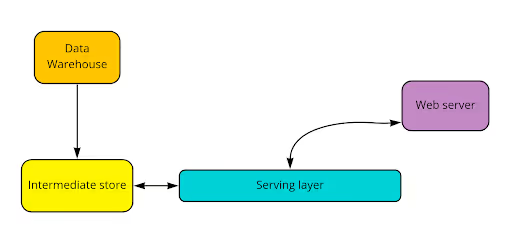Serving your audiences with the most relevant content is crucial to creating a great customer experience and improving customer retention.
Recommendations based on simple logic can provide only generic customer experiences, which in many cases do not meet modern audiences’ expectations or drive engagement.
Data leaders are now using behavioral predictors to create highly-personalized content suggestions, increasing the stickiness of their offerings by better understanding how their content is consumed, as well as the people consuming it.
The range of possibilities for content recommendations
As we alluded to above, there is a sliding scale of complexity when it comes to content recommendations.
This opens up the possibility of a fully data-informed content strategy, as you invest your time and resources into the site sections, content types, and styles which are working.
Metric-based recommendations
These types of content suggestions are made based on generalized data. This might include your company’s most shared or liked articles.
Even though there is a behavioral element to this data, the information is aggregated, so suggestions are basically the same for everyone. Needless to say, this is a lighter lift than personalized suggestions, but also can reduce the appeal of the content recommended.
Personalized recommendations
Let’s take Spotify for example. They do not recommend the same music across the board, and if they did we probably wouldn’t enjoy it that much.
The core of Spotify’s appeal is its uncanny ability to find similarities between songs, and keep suggesting content to match your current mood. If you’re listening to The Beatles, you probably wouldn’t want the rap group Wu-tang Clan popping up as your next song, so some kind of Beatles-esque tracks are what you need for today.
Each potential suggestion, in this case, needs a ‘similarity score’, which can be used to filter the options to present the user with. This is known as ‘content-based filtering’.
More complex still is ‘collaborative filtering’. This identifies patterns between users and groups these users into cohorts. If a similar user to you likes The Beatles, well, you’re probably going to like them too.
Here’s a technical deep dive into creating content recommendations for blogs with Snowplow.

The challenges with content recommendations
Technical complexity
As you can see above, we have an increasing level of complexity, and therefore increasing technical difficulty based on the level of personalization.
In order to serve generalized recommendations, all you need is a basic understanding of how much attention a given piece of content gets. However, to create groups of similar users, behavioral profiles may need to be created and then a system built to serve the audience with the right content at the right time.
That might look something like this:

This requires behavioral data, and is generally achieved by modeling data sets in a data warehouse or lake.
This approach can present a challenge for organizations, as it requires adopting several tools and increasing the sophistication of your data capture, processing, and activation. Despite this, however, the rewards can be massive, as it effectively gives you more granular information to work with and a more granular mechanism to act on this information.
Data latency
Another challenge with content recommendations is the need for real-time data.
As your audience moves through your site or app, recommendations need to be calculated in seconds in order to achieve the maximum relevance.
Many tools are not capable of delivering this speed while also serving rich, modeled data. As a result, it’s common to rely on event forwarding, which is easier to do at speed, but compromises the quality of the data sets used and therefore the relevance of the recommendations.
Measurement of success
It’s also hard to know if your content recommendations are actually working.
Broad metrics can be used, such as the amount of time users spend consuming content, but that just tells you something is working in general.
If you want to know the relative benefits of serving one piece of content over another, regular testing is necessary, ideally within segments. Have you ever noticed how the thumbnail images change on Netflix? They are always AB-testing different ways of presenting their content to maximize engagement within a given cohort. This is just one of the ways in which they measure and adapt the effectiveness of content suggestions.
What can you achieve with better content recommendations?
Here’s Netflix’s quarterly revenue, showing their increasing financial success. This maps the sophistication of their data projects, as their algorithm went from a simple API, gauging content popularity- based on IMDB data (metric-based) – to the highly-personalized data platform it is today.
Another example comes from the ad tech company, JustWatch. They optimized the delivery of movie trailers by using machine learning and clustering algorithms to match users with content.
This increased the efficiency of their trailer advertising campaigns by 100%.
“Having access to the event-level data enables us to not only finely segment users, but also provide users with highly personalized adverts and experience. ”
SIXTINE VERVIAL | JUSTWATCH
How Snowplow enables you to drive more value from your content
Snowplow has been built from the ground up to allow for advanced analytics and AI use cases.
Our tooling provides reliable, explainable, compliant, accurate, and predictive behavioral data, giving you a deep understanding of how your customers move through your content and how they respond to your recommendations.
Check out this Snowplow data sample to see this granularity for yourself.
This data can be used to create real-time tables in your warehouse or lake, allowing you to understand everything from ‘seconds of a video viewed’, to ‘horizontal scroll depth’ and ‘time on page in seconds’.
This information can be stitched into user journeys to make highly predictive profiles of your customers and create hyper-personalized recommendations.

